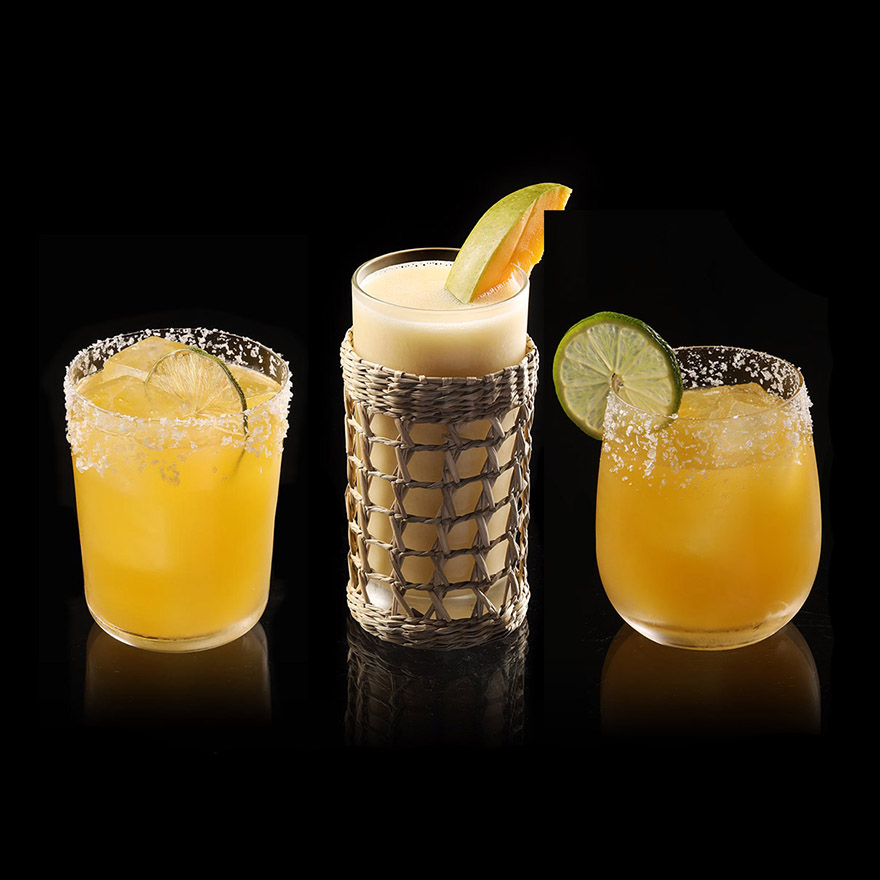Freezer Martini

Glass:
Serve in a Bottle
| 2 1⁄12 oz | Hayman's London Dry Gin |
| 0.42 oz | Strucchi Dry Vermouth |
| 2⁄3 oz | Chilled water |
| 2 drop | Saline solution (20g sea salt to 80g water) or merest pinch of s |
Prepare:
- Select a BOTTLE.
- Prepare garnish of skewered chilled green olive &/or lemon zest twist for each individual serve.
How to make:
- Use the serve number selector (below the ingredients) to set the number of serves you want in your pre-batch. (x7 serves is recommended as this will fill a standard bottle – see below for x7 volumes and weights).
- POUR all ingredients into a clean, resealable 70cl or 75cl bottle.
- Seal the bottle and turn/shake to ensure the integration of ingredients.
- Place bottle, along with serving glasses, in a freezer for three hours. (Beware, your cocktail is likely to freeze if left for extended periods.)
- For each individual serve, POUR 90ml/3oz directly from the frozen bottle into the frozen glasses.
Garnish:
- Garnish each cocktail with a skewered olive &/or lemon zest twist.
Allergens:
Recipe contains the following allergens:
- Dry vermouth - Sulphur Dioxide/Sulphites
Strength & taste guide:

Review:
This easy-to-measure recipe produces a 5:1 ratio Dry Martini with a dilution that suits being served icy cold serve. Be sure to chill your olives or, as Dale DeGroff once said to me, "You'll have a heat bomb".
If preparing x7 serves (as recommended to fill a standard bottle)
To measure your ingredients by weight (rather than volume):
1. Place a clean bottle with a funnel in the neck on your scales and then zero the scales.
2. Carefully pour each successive ingredient into the bottle until you reach the cumulative weight shown after that ingredient:
438 ml London dry gin [ 404g ]
87.5 ml Dry vermouth [ 492g ]
140 ml Chilled water [ 632g ]
14 drops Saline solution
History:
Regular Martini Drinkers have their own preferred ratio of gin (or vodka) to vermouth, but the one thing that Martini Drinkers agree upon is the need for this cocktail to be cold. Very cold. Hence, it's not surprising that a bartender decided that it would be beneficial to use a freezer to properly chill the glass and ingredients. We'll never know who was the very first person to use a freezer in the preparation of a Martini, but as far as I'm aware, Giuseppe Cipriani is the first to stipulate this in print.
Giuseppe Cipriani was mixing Martinis at the Hotel Europa in Venice before he opened his Harry's Bar nearby in 1931. When Cipriani started to place his Martinis, glasses and all, in a freezer as part of his preferred method of service is unknown but he describes this in his 1987 book L'angolo dell'Harry's Bar, published seven years before Salvatore Calabrese made his "Direct Martini" for Stanton Delaplane at Dukes bar. While successive Dukes bartenders have continued to hero and become most identified with this style of Martini service, frozen Martinis were certainly being served by Giuseppe Cipriani many years earlier.
Aperitifs are essential to the success of a gathering; they help break the ice and almost eliminate shyness. However, be careful about who will be drinking them: don't offer a too strong aperitif to friends who are not used to drinking, but also not a too light one to those who, besides being your friends, are also friends of the glass.
Giuseppe Cipriani, L'angolo dell'Harry's Bar, 1978
The martini, for example, is strong. I would do it like this. First, take a bottle of good English gin and a bottle of dry Italian white wine and put them in the refrigerator in the morning. About an hour before the guests arrive, pour a part of the wine and five parts of gin into a pitcher filled halfway with ice. Stir a little but not too much and pour into 60-gram glasses. Put the filled glasses in the freezer until the guests arrive.
Nutrition:
One serving of Freezer Martini contains 152 calories
Alcohol content:
- 1.5 standard drinks
- 21.66% alc./vol. (43.32° proof)
- 20.6 grams of pure alcohol
Difford’s Guide remains free-to-use thanks to the support of the brands in green above. Values stated for alcohol and calorie content, and number of drinks an ingredient makes should be considered approximate.

Cosmic Alaska

Espresso Breakfast Martini

White wine
White wine is produced through the fermentation of grape pulp. Grapes are naturally chemically balanced to ferment without requiring additional sugars...
Venice City Guide
Ancient, romantic and picturesque, the city of Venice sits precariously on a series of mud banks that lie in a lagoon off Italy's north-eastern coast...
Some cocktails benefit from added water
The size, and shape of the ice you use when mixing cocktails will affect the amount of dilution added when mixing. Large cubes in a cocktail shaker have...
20 best Christmas cocktails
Christmas is a time for overindulgence, so these cocktails are rich in every sense of the word. In America, the creamy Eggnog dominates the festive cocktail...
20 best Halloween cocktails
All Hallows' Eve, the 31st of October, is spook night with bizarre costumes, trick-or-treat, pumpkin carving, apple bobbing and bonfires all the rage...




Join the discussion
Showing 4 comments for Freezer Martini.
See discussion in the Forum